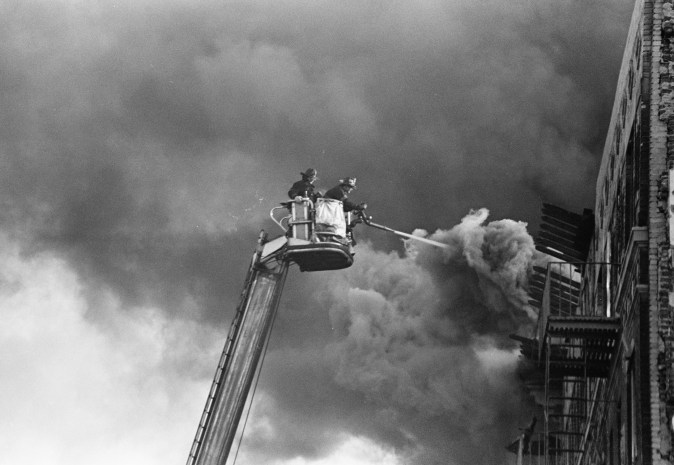In the 1970s, the Bronx was on fire. During the 1977 blackout alone, for example, it’s estimated that 1,000 fires burned in the New York City borough. By that point, the idea of seeing the Bronx as a prime example of urban decay was readily accepted by everyone, including many of its residents. “A lot of us still believe that we were to blame,” says Vivian Vázquez Irizarry, the co-director and protagonist of the documentary Decade of Fire. “Cause that’s the only story that ever gets told about the fires. But I could never let that go.” The film, which will gets its broadcast premiere on PBS as part of the Independent Lens program, is her attempt at telling the real story behind the fires. Using her own home videos as well as rich archival footage from the era, Decade of Fire is both a personal tale about a Puerto Rican family trying to achieve the American dream in New York City and a history lesson that speaks to the ways black and brown communities in New York City bore the brunt of racist policies, citywide neglect and the greed of landlords eager to cash in on lucrative insurance claims.
The images of the Bronx burning that open Decade of Fire feel like an assault. There are so many of them that their repetition is relentless: Helicopter shots show buildings spewing smoke as if they were giant chimneys, grainy footage from the streets reveals whole rows of houses being consumed by flames. Whether in close-up or from far away these emergencies are clearly so commonplace that Vázquez Irizarry and her co-director Gretchen Hildebran had plenty of archival images to choose from. And the effect is undeniable: The more you see the Bronx burn the more outraged you become.
“In 10 years we lost nearly 80% of our housing to fires,” Vázquez Irizarry informs us in her soothing voice-over, which will serve as the doc’s guiding narrative thread. “Around a quarter of a million people lost their homes.”
In the face of such statistics and images, you immediately understand why the South Bronx native would want to reclaim decades’ worth of misinformation to give back to her neighborhood the dignity it had so obviously been robbed of.
To understand how one of the most integrated neighborhoods in all of the United States in the 1960s became an example of urban violence and decay in the 1970s, Decade of Fire gives us a necessary history lesson in redlining and urban renewal. Those twinned policies, the first taking root in the 1930s, the latter blossoming in the postwar era, were clear attempts to keep communities of color segregated and contained in neighborhoods that were basically abandoned and left to rot.

But the triumph of Decade of Fire is that among its very didactic moments where such sociohistorical issues are explained in lucid ways is a very personal story. Rather than (merely) drowning us in the labyrinthine ways in which government officials, lawyers, bankers, the fire department, the police, landlords, and agencies at the city and state level failed the Bronx, this doc puts those social forces in the context of a family story. The most powerful choice Decade of Fire makes is to shoot and frame Vázquez Irizarry’s narration as a conversation with her grown-up son. As she shows him photos of his grandfather, who flew from Puerto Rico hoping for a better life for his family, or revisits familiar blocks and apartments while recounting family anecdotes, she’s showing the personal toll political forces had on families like hers.
The more images of devastation we see (of rubble-filled city blocks and burnt buildings), the more witness accounts we hear about who started the fire (young men and women paid off by landlords) and the more those two are connected to city policies, the more Decade of Fire emerges as a powerful document of the way racism is inscribed into institutions presumably designed to aid all citizens. The fact alone that cutbacks to New York City’s fire department led to the closing of stations in the neighborhoods where such blazes were most common is enough to make you angry all over again.
As it nears its end, Vázquez Irizarry and Hildebran’s film calls up that very anger yet again once they show how developers and city officials are currently attempting to gentrify the South Bronx all in the name of urban development. The community organizers who have valiantly worked these past few decades to restore the Bronx to what it once was and always could be are now faced with yet another fight. Decade of Fire is a call to arms, a family memoir, and a history lesson. More importantly, perhaps, it’s a love letter to the Bronx and its inhabitants.
Decade of Fire premieres November 4, 2019, at 10 p.m. on PBS and PBS.org




